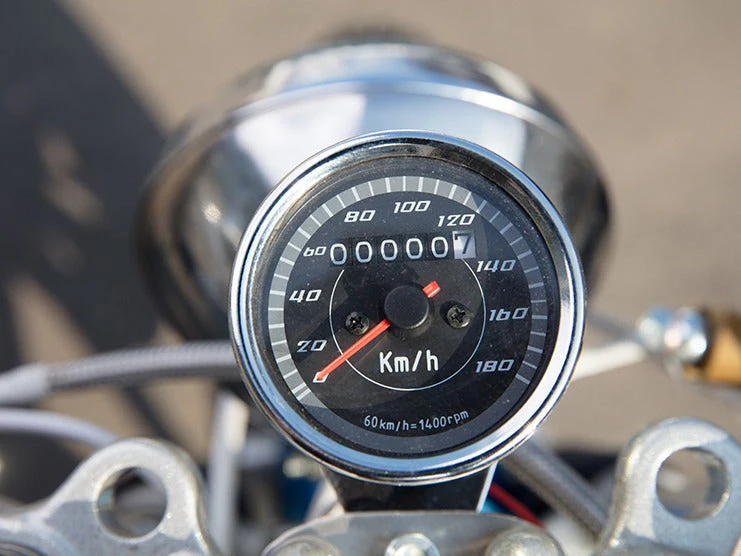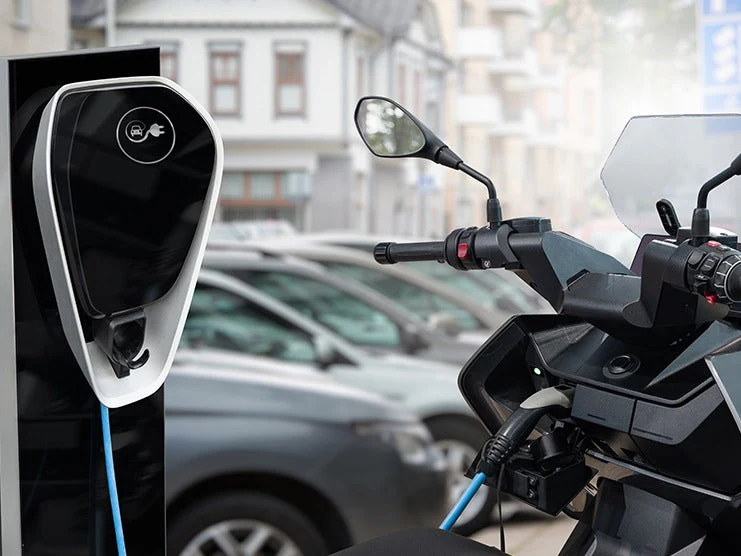Although motorcycles have been around for over a century and the technology is used to advance them year after year, a fuel gauge on a motorcycle is still hard to come by, and a fuel gauge on a motorcycle that really functions is even harder to locate. Why then have manufacturers not discovered a way to include fuel gauges in modern bikes?
This article will discuss several reasons why some motorcycles don’t have a fuel gauge and the pros and cons of adding a fuel gauge to your motorcycle.
Table of Content

1. Reasons Why Some Motorcycles Don’t Have a Fuel Gauge
1.1 Simplicity
Motorcycle manufacturers build motorcycles without a fuel gauge because it’s simpler. A fuel gauge must have a liquid level sensor. As you ride your motorcycle, the liquid level sensor within the fuel tank must remain above the fuel level. This can cause the fuel gauge’s needle to dart back and forth whenever you turn on your motorcycle. As a result, the fuel gauge would become a distraction.
1.2 Incorrect Reading
A fuel gauge can often be incorrect, especially if installed on carbureted motorcycles. Fuel gauges may not show the correct or precise reading.
A fuel gauge has a float that rests on the surface of the fuel, which moves up and down as the fuel level changes.
A fuel gauge also has a bimetallic strip that changes the resistance. The fuel gauge indicator has two magnetic coils that control the needle. Any change in resistance changes the current flow to the magnetic coils. As the magnetic field of the two coils changes, the needle will move along the fuel gauge and settle on the current fuel level.
The fuel gauge requires several factors to function, including its strip resistance, float position, magnetic field, and needle. An error in any one of these factors may result in the fuel gauge showing an incorrect reading.
1.3 Takes Up Space
Any fuel gauge setup will take up a lot of space. Every part requires adequate space to function properly, but motorcycles tend to have limited space due to their compact frames.
The fuel gauge also takes up a lot of space next to the tachometer or speedometer. It is also connected to a sending unit, a wiper, a float, a resistor, and a bimetallic strip setup.
You also need to connect the sending unit to the bimetallic strips and connect the battery to the sending unit.
All these components of a fuel gauge crowd the already little space on the instrumental panel of the motorcycle.
1.4 Cost
Since fuel gauges with traditional liquid level sensors are ineffective, many manufacturers are heavily investing in creating fuel level sensors that still work even when climbing inclines or leaning when turning. However, the cost to manufacture more advanced fuel gauges is expensive.
1.5 Structural Weakness
The motorcycle fuel tank has two openings: a top opening to add fuel and a bottom opening where the fuel travels to the engine. The fuel gauge adds another point of entry to the fuel tank. Although this entry point is sealed, there's always a chance of the fuel tank leaking from the fuel gauge. Wind, rain, debris, and the sun’s ultraviolet rays can enter the fuel tank via this opening. Unlike other vehicles, a motorcycle fuel tank is located along the top of the vehicle, making it more likely to suffer damage.
2. Pros and Cons of Adding Fuel Gauge to Motorcycles

2.1 Pros
Show the Amount of Fuel
A fuel gauge installed properly will show the amount of fuel in the fuel tank. If the fuel gauge is faulty, it will only give you an estimate of how much fuel is in the fuel tank. Using a fuel gauge will keep you from having to open the fuel tank constantly to check the fuel level. Nevertheless, try to be aware of any strange noises or reduced performance since fuel gauges can be wrong.
Improve the Motorcycle’s Look
A fuel gauge can improve your motorcycle’s look. The market has a variety of fuel gauge designs, allowing you to choose one that best complements your motorcycle.
Make sure that the fuel gauge you choose fits your motorcycle and has good reviews. Some aftermarket fuel gauges include instructions on how to install them.
Increase Resale Value
Many people consider a fuel gauge an added benefit when buying a used motorcycle. A fuel gauge can increase the resale value of your motorcycle, but it depends on the type of motorcycle you own. For instance, if you are selling a custom-made motorcycle, the fuel gauge may not go with the motorcycle’s appearance. On the other hand, if you are selling a general commuter, the fuel gauge is an essential feature for a new owner.
2.2 Cons
Possibility of Leaking
The regular fuel tank has two holes in it, a fuel gauge adds another hole in the fuel tank. The fuel gauge opening may become corroded since fuel has corrosive properties. Although the opening is sealed, there’s still a chance of fuel leaking.
Lack of Space
A motorcycle has a compact frame that leaves little space for installing additional parts. This is especially true if you are thinking of adding a fuel gauge to a custom motorcycle.
Doesn’t Measure the Exact Amount
A fuel gauge relies on a level sensor to measure the exact amount of fuel in the fuel tank. However, motorcycle tanks with curves and grooves in their designs make it difficult to accurately measure fuel and may provide an incorrect reading.
Cost
Many motorcycles have a built-in fuel gauge in the instrument panel. More advanced fuel gauges that provide accurate results are more expensive. This is also the case for aftermarket fuel gauges, the cost of adding an aftermarket fuel gauge outweighs the benefits of having one.
3. How to Add a Fuel Gauge to Your Motorcycle
3.1 Steps
-
Gather the Necessary Repair Tools:To install a fuel gauge, you will need to gather the following repair tools:
- Screwdrivers
- Allen Key Set
- Universal Wrench Set
- Hex Bolts
- Pick the Right Fuel Gauge: Always choose a fuel gauge that best complements your motorcycle's look.
- Keep the Fuel Tank Separate from the Motorcycle: Start by locating the nuts attached to the tank. Unscrew the bolts and remove the fuel tank from its position.
- Attach the T-Bracket with the Petcock: A fuel petcock is the bracket connected to the fuel tank and controls the flow of fuel. Attach the T-shaped bracket to the fuel gauge box with the fuel petcock.
- Place the Sending Unit: The sending unit sends signals to the fuel gauge. Place the sending unit (included in the fuel gauge box) on the fuel tank.
- Secure the Electrical Wiring: After securing the other components, secure the electrical wiring by following the instruction manual.
- Reattach the Fuel Tank: Place the fuel tank back in its original position.
- Connect the Wires to the Fuel Gauge: Place the fuel gauge at an appropriate place and connect the back-end wires.
4. Last Words
Despite the many benefits of a fuel gauge, some motorcycles still don’t have it for a number of reasons. The main reason is fuel gauges are non-reliable and inaccurate. Moreover, lack of space and cost are other major reasons for not having a fuel gauge on the motorcycle. There are a variety of aftermarket parts available at Viking Bags, including sissy bars, fairings, seats, crash bars, luggage racks, and luggage options containing saddlebags, sissy bar bags, tank bags, swing arm bags, and backpacks.













Leave a comment
All comments are moderated before being published.
This site is protected by hCaptcha and the hCaptcha Privacy Policy and Terms of Service apply.